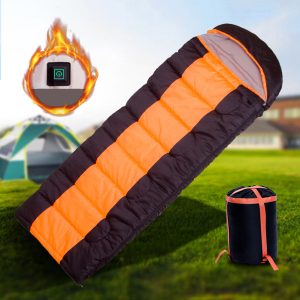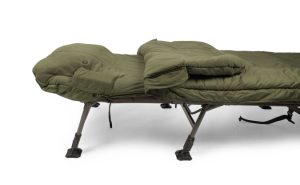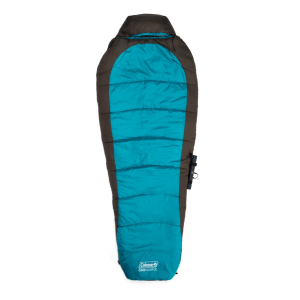Heated Sleeping Bag: A Must-Have for Outdoor Adventures
What is a Heated Sleeping Bag?
Are you an adventurer at heart, a camping enthusiast, or just a lover of the great outdoors? Then let me share a delightful innovation that will transform your nights under the stars: the Heated Sleeping Bag. Imagine your regular sleeping bag, but with a warming twist: it’s heated electrically! No more waking up chilled to the bone on frosty mornings.
These bags are a blessing for those venturing into cold terrains. With their added heating elements, they can stave off the bitter cold that can creep in during the night. Now, you can enjoy a snug sleep without trading in the thrill of outdoor camping!
Benefits of a Heated Sleeping Bag
Heated sleeping bags are not just a luxury, they serve some genuinely practical purposes. Firstly, they provide adjustable warmth, which means no more shivering nights in icy weather. They can be set to your comfort level, ensuring you enjoy a cozy sleep.
Furthermore, if you’ve been hiking or adventuring all day, the warmth from the bag can soothe your tired, aching muscles. Also, the consistent temperature provided by the heated bag can aid in achieving a better sleep cycle. So, you wake up fully refreshed and ready to take on the next day’s adventures.
Features to Consider When Choosing a Heated Sleeping Bag
Temperature Range and Control
Heated sleeping bags come with an incredibly beneficial feature of temperature regulation. You can alter the heat settings according to your comfort and outside temperature. Some heated sleeping bags offer a range from just above ambient to quite warm, providing the flexibility to adapt to a variety of climates and personal preferences.
Most heated sleeping bags have an inbuilt controller for adjusting the heat. This controller is typically designed to be easy to use, even in the dark, so you can change settings without needing to leave the comfort of your bag. Some advanced models even offer remote controls or smartphone apps for even more convenience.
However, it is essential to remember that the temperature range and control can significantly vary from one product to another. It’s important to consider your individual needs, the climate in which you’ll be using the bag, and the bag’s battery life when choosing the right temperature range for you.
Battery Life and Power Source
Battery life is a crucial aspect when considering a heated sleeping bag. Most heated sleeping bags are designed to operate on a portable power source such as rechargeable batteries or power banks. The battery life usually ranges from a few hours up to a whole night, depending on the temperature settings and the quality of the battery.
Many heated sleeping bags come with their power source, while others may require you to provide your own. It’s crucial to check this before purchasing, as you’ll need to factor in the cost and availability of suitable power sources if they’re not included.
Maximizing battery life is crucial for overnight trips, especially in cold conditions. It’s advisable to fully charge your battery before your trip and consider carrying a spare if you’ll be away from a power source for an extended period.
Material and Insulation
The material and insulation of a heated sleeping bag are central to its efficiency and comfort. The exterior material should be sturdy and water-resistant to protect against outdoor elements. Common materials include nylon or polyester, which are lightweight and durable.
Insulation, on the other hand, is what traps heat inside the bag. It can be down (duck or goose feathers) or synthetic. Down is light, efficient, and excellent for very cold conditions, but loses its insulation properties when wet. Synthetic insulation is less efficient, but it is cheaper and performs better in wet conditions.
The interior lining should also be comfortable against the skin. Some bags feature a soft cotton or polyester lining, while others may have a fleece lining for added warmth. The material can also impact the bag’s weight and how easy it is to clean, so consider your needs carefully.
Size and Weight
When selecting a heated sleeping bag, the size and weight are crucial considerations, especially if you plan on backpacking or hiking. The size should be adequate to accommodate your body comfortably. Most heated sleeping bags come in standard sizes, but some brands offer wider or longer versions for taller or larger individuals.
The weight of the sleeping bag can influence your camping experience significantly. A lighter bag is easier to carry around, making it ideal for backpacking or hiking. However, lighter bags might compromise on certain features like battery life or temperature range.
Make sure to find a balance between size, weight, and functionality. It may help to try out a few different options in person to see what feels most comfortable to carry and sleep in.
Safety Features
Safety is paramount when using a heated sleeping bag. Look for features like an auto shut-off function, which turns off the heater after a certain period to prevent overheating. Some bags also have a thermal cutoff, which will turn off the heater if the bag becomes too hot.
It’s also important to consider the safety of the power source. The battery should be encased in a fire-resistant material and should be located in a place where it won’t cause discomfort when you’re lying in the bag.
Remember to always follow the manufacturer’s guidelines on using and caring for your heated sleeping bag. Incorrect use can not only damage the bag but can also pose a risk to your safety.
Usage and Maintenance Tips for Heated Sleeping Bags
Proper Use of Heated Sleeping Bags
Knowing how to properly use your heated sleeping bag can ensure you get the most benefit from it. The first step is to fully charge the battery before use. It’s best to turn on the heater a few minutes before you get into the bag, so it’s warm when you’re ready to sleep.
It’s advisable to start with a low heat setting and then gradually increase if necessary. This way, you won’t risk overheating or draining the battery too quickly. Remember to turn off the heater if you start feeling too hot.
Never use the heated sleeping bag with wet clothing or in wet conditions, as this can damage the heater and may even pose a safety risk. Always dry off and change into dry clothes before getting into your heated sleeping bag.
Cleaning and Storage
Maintenance of your heated sleeping bag is essential for its longevity. Cleaning should be done according to the manufacturer’s instructions. Some bags may be machine washable, while others may require spot cleaning only.
Always ensure your heated sleeping bag is completely dry before storing it to prevent mold and mildew growth. Most heated sleeping bags come with a stuff sack or compression bag for storage. This not only protects the bag but also compresses it to a manageable size for transport.
It’s also recommended to remove the battery before cleaning and storing the bag. This not only prevents potential water damage but also prolongs the battery life.
Maximizing Battery Life
Maximizing the battery life of your heated sleeping bag involves a few simple practices. Firstly, always fully charge the battery before you head out. You should also avoid using the highest heat setting for prolonged periods, as this can drain the battery quickly.
Some bags allow you to use a power bank as an alternate power source. This can be a convenient option, especially on longer trips, as you can charge your power bank during the day using a solar charger.
Finally, it’s essential to store the battery correctly when not in use. Storing it in a cool, dry place and topping up the charge every few months can help keep the battery in good condition and extend its lifespan.
Top 3 Recommended Heated Sleeping Bags
Outrek 2 Heated Sleeping Bag
Outrek 2 is known for its battery-powered heating elements that provide warmth at the bottom and top of the sleeping bag. It’s made of a water-resistant material that keeps you dry even in damp conditions. The temperature control allows you to set the warmth level according to your needs, making it an excellent choice for those planning to camp in colder climates.

Avid Carp Benchmark ThermaTech Heated
Heating elements are placed along the full length of the sleeping bag, with four adjustable heating intensities, allowing for use according to individual needs and outdoor temperature all 365 days a year. USB cable allows you to connect the sleeping bag to a power bank or a similar energy source. Unlike traditional 5-season sleeping bags, which are often really large, heavy, and bulky, the Benchmark ThermaTech Heated Sleeping Bag is up to 50% more compact.

Coleman® OneSource™ Heated Sleeping Bag
This mummy-shaped sleeping bag keeps you warm down to 32°F with two heating pads. It’s powered by a rechargeable lithium-ion battery, compatible with all Coleman OneSource products, which also offers USB charging for your devices. The battery lasts 2-4 hours depending on heat setting, but runtime can be doubled with a second battery. Notable features include a semi-sculpted hood, Thermolock™ draft tube, Coletherm® insulation, and ZipPlow™ zipper, all designed for warmth, convenience, and durability. The bag is machine washable and comes with a stuff sack for easy storage.

Conclusion
In conclusion, a heated sleeping bag is a real game-changer for outdoor adventures. It ensures you stay warm and cozy, no matter how cold it gets outside. Once you’ve experienced the comfort of a heated sleeping bag, you’ll never want to go back to a regular one!




